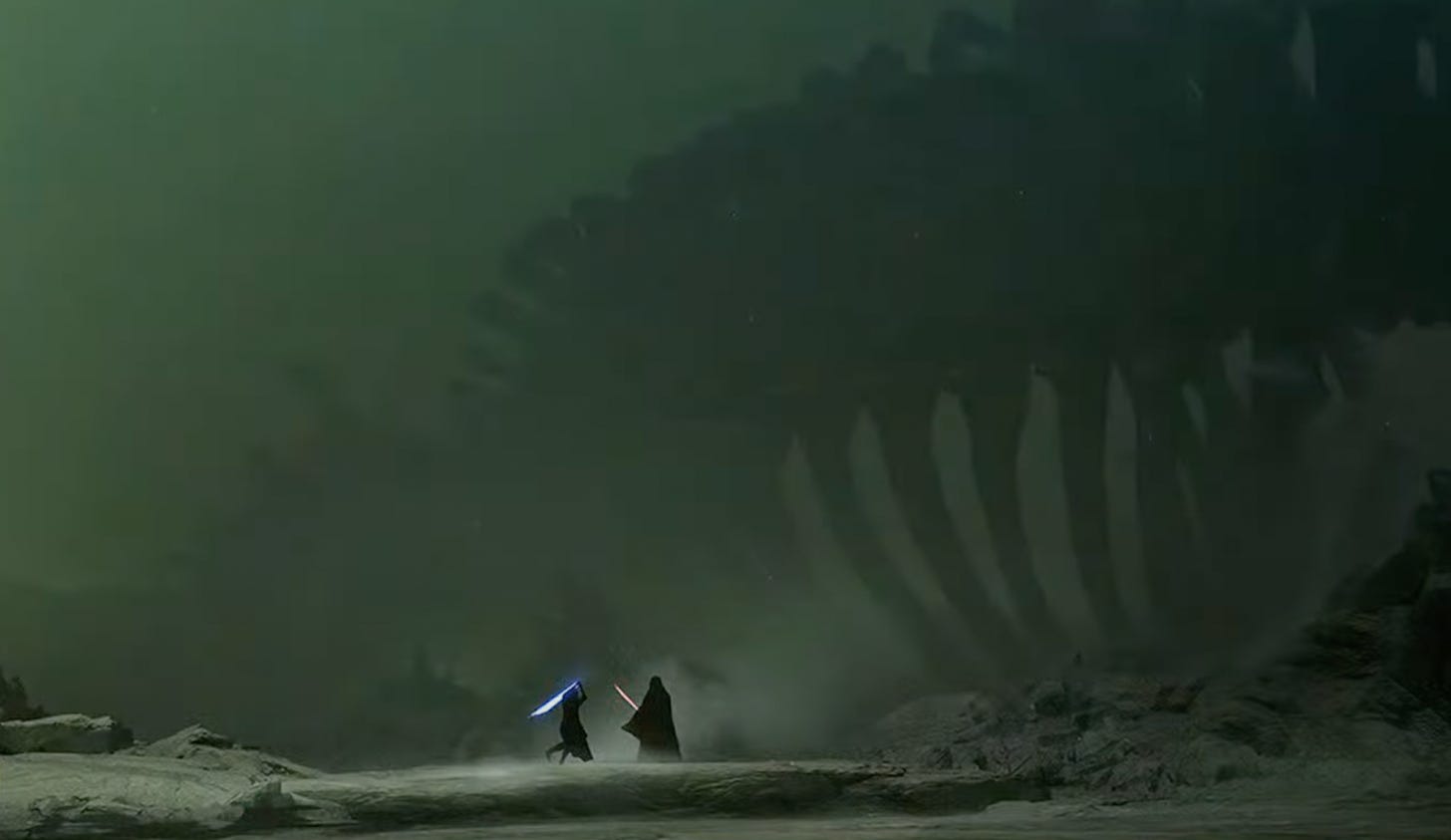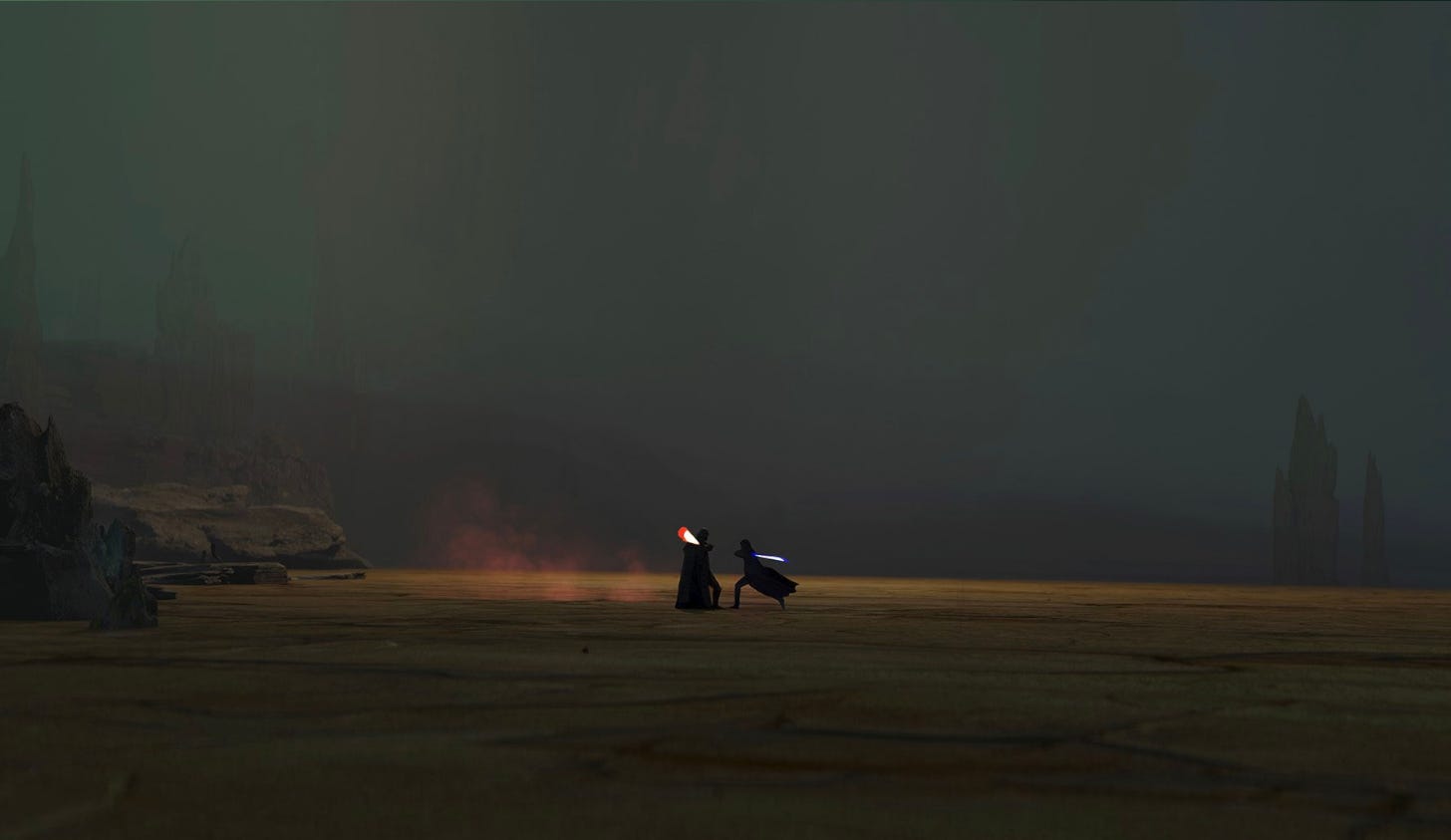Then My Friend Is Truly Dead: The Final Fight of Obi-Wan Kenobi, according to Doug Chiang
A barren moon, giant skeletons and an operatic space Western: Doug Chiang explains the design process of the final fight between Obi-Wan and Darth Vader in the Star Wars series Obi-Wan Kenobi.
Ten years after the events of Revenge of the Sith, Obi-Wan Kenobi and Anakin Skywalker meet again. However, not much is left of the eager Padawan from the prequel trilogy. Obi-Wan meets the hateful eyes of a monster panting in the dark: Darth Vader. “Then my friend is truly dead,” the Jedi Master says in one of the most heartbreaking scenes in Star Wars history. How did we get to this point?
At Star Wars Celebration, concept art legend Doug Chiang revealed the thoughts and creative decisions behind the final fight in Obi-Wan Kenobi. One of the most important things of designing the scene was the landscape. Everything had to mirror the internal conflict of the two characters. Welcome to the eerie surface of a barren moon that looks and feels like a graveyard filled with corpses of ancient creatures and the pain of the past.
Chiang explains:
One of our initial ideas was to set the fight on a barren moon with giant skeletons in the background to make it creepy and weird. We wanted the environment to mirror their emotional conflict. We even explored the idea of having good and evil lighting, warm and cool tones in the environment to reinforce this dichotomy.
As they developed this idea, the skeletons became more abstract.
We simplified the skeleton to giant ribs that stuck out from the ground. This started to resonate for us. There was something powerful about the strong vertical and horizontal graphic that created tension. The landscape looked angry and dangerous. But the bones were getting too fantastic.
Star Wars takes us into a galaxy far, far away where everything is possible. But sometimes you need to go back to the things you know to bring your imaginative story to life.
We needed that 80 percent of reality to make this authentic. Keeping attention, we explored a more grounded version by turning the bones into giant bamboo like trees. This worked. But because we know the scale of bamboo trees, this again made our characters small and ended up diminishing the impact of the set.
To solve the problem, Chiang’s design team turned the trees into giant rock spires. This worked much better, especially when the characters are placed in relation to their surroundings. Tiny figures in front of an epic backdrop: That’s dramatic! A perfect way to increase the meaning of the spectacle which is unfolding in front of our eyes.
The first stage was set in a wide open area to get the classic western trope of gunfighters standing off. And as the fight progresses, we slowly move up into the rocky spires. The spires start off small first but then as the fight fights their way up to the plateau the spires grow more tall and dangerous looking.
As the fight between Obi-Wan and Vader intensifies, the landscape intensifies as well. You just need to look at the surroundings to know that things are getting serious and very uncomfortable.
The final ingredient to perfect the atmosphere is the lighting, as Chiang explains.
The setting of the climactic battle is in the middle of the giant spires that look like teeth. We tried harsh theatrical lighting to create an almost operatic quality. I wanted to see if we can heighten the drama by exaggerating the lighting.
While the lighting concept doesn’t come across as well in the series as in the concept art, the various stages of the fight are preserved. At first, Obi-Wan and Vader find themselves in a standoff before going deeper and deeper into a maze of stones and rocks. With every passing minute of this fateful encounter, the hopelessness of the moment increases. Once again, Star Wars breaks our hearts when Ewan McGregor and Hayden Christensen meet on a remote planet.
You can follow Doug’s work on Instagram and ArtStation.
Image credit: Lucasfilm









